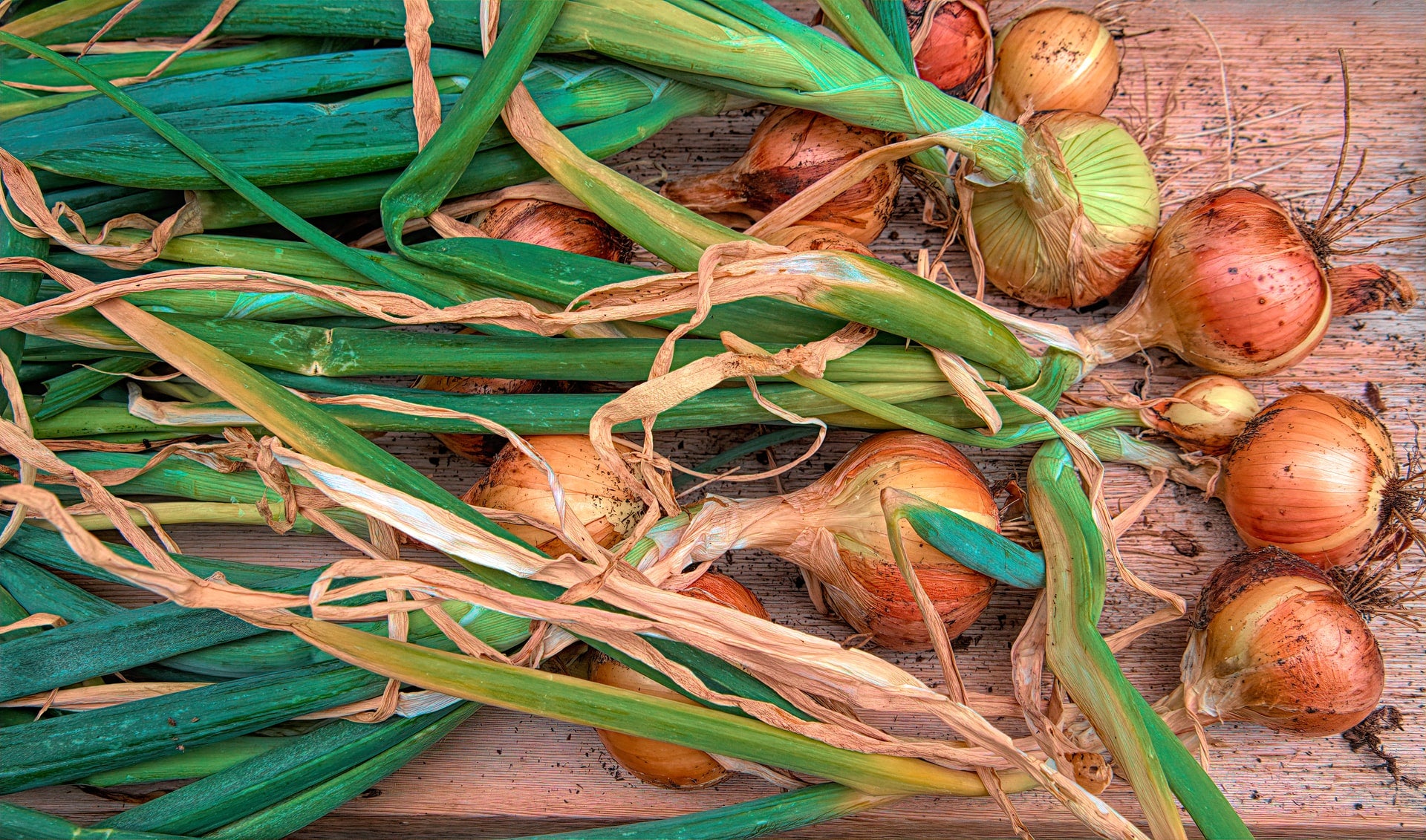Grow vegetables: Many vegetables and herbs can be grown wonderfully from leftovers. Especially the stalks and root ends that would otherwise end up in the trash become the starting material for your own kitchen garden. This also works on the windowsill and with many different plants.
One of the great advantages is that the vegetables are not only free of charge, but also free of harmful substances. It can also be great for children to see how leftovers are turned into new food. Here are some of the easiest ways - including onions, tubers and even exotics!

Bulbous plants: The uncomplicated ones
The group of onion plants includes edible onions, spring onions and also the spicy garlic. They all get a new life if you keep the root ends.
- Spring onions: They are the easiest to propagate. Simply place the stalk, about two centimetres long, with the roots in a glass with a little water. The roots and a few millimetres of the stalk should be covered. The water should be changed occasionally so that the plant does not rot. It only takes a few days for the green shoot to grow back. The rooted spring onion can also be planted. The root piece of vegetable onions can be revived in a similar way, it should be cut off in a thickness of about 1.5 centimetres.
- Garlic cloves: They also sprout after a while. These green sprouts are a little more restrained in taste and can be used in a similar way to chives. Usually it is enough to put the garlic clove in a little water to stimulate growth. The whole bulb can also be planted, provided most of the cloves have already sprouted.

Other easily traced perennials and tubers
Bulbous plants are not the only "easy-care" and inexhaustible ones on the vegetable shelf. Their close relatives, the perennials, and many tubers such as fennel or ginger can be easily regrown.
- Leek, celery, lemongrass: These perennials are also grown in the same way as spring onions. To do this, place the celery stalk, which should be about five centimetres high, in a shallow bowl of water. In a sunny location, new celery leaves will appear after just one week. You can also plant the celery in the garden or in a flower pot and get a never-ending supply.
- Fennel: Those who love fennel herb for salads or as a decoration on soup will be pleased to know that fennel bulbs also sprout again quickly. As with most perennials and bulbs, all that is needed is a container with a little water, covering the root area and replacing it again and again. Within a week, new fennel greens will begin to sprout - delicious!
- Ginger: A decorative plant and new tubers can be grown from the shoots of the ginger tuber. The small shoots and short roots make it easier to plant ginger. The plant grows well, but is very demanding in terms of warmth and humidity. With a bit of luck, you will get the ginger to flower - a real splendour - and you can harvest new ginger roots. This works particularly well in a mini-greenhouse on the balcony.

The root of all things
What works with perennials and bulbs can also be copied with roots and tubers. Resourceful windowsill gardeners can grow carrots, potatoes and sweet potatoes in the kitchen or on the balcony. A raised bed helps with larger tubers.
- Carrots: Carrots get a second chance when the top end with the beginnings of the green re-roots in a glass of water. With a few toothpicks, the carrot cap can just be positioned with the underside in the water until roots form. After planting, you can quickly harvest new carrot greens, and if you are patient, you can also look forward to new carrots.
- Potatoes and sweet potatoes: Potatoes of all kinds sprout from the "eyes" that form on tubers that have been left lying around. To obtain the most productive harvest, the tubers are cut into pieces, one for each eye cluster. The pieces should not be too small, but several centimetres thick, and left out to dry for a few days, otherwise they will rot. Plant the potato pieces with the eyes pointing upwards at a depth of about 10 centimetres. To make the action worthwhile, it is best to add some compost.

Propagate and cultivate herbs
Aromatic herbs can be grown very well from a single sprig. This works with basil, rosemary or mint. The stems should not be too tender, but a little more robust. A length of 10 - 15 centimetres is optimal, the leaves at the bottom are removed. In a container with clean water, which is changed again and again, most kitchen herbs sprout quickly and can then be planted. Herbs usually want a sunny or at least bright location and then thrive magnificently. Cutting back the shoots does them good and even stimulates growth.

"Second Life" for vegetable scraps
When it comes to food, a change of mindset is emerging that is not found in many areas of consumption. Less waste, more fresh produce from zero kilometres, reusing leftovers is also part of it. Since good quality fresh vegetables are not among the cheapest foods, re-growing from vegetable leftovers opens up great opportunities for a sustainable, healthy and frugal lifestyle. A well-sunny windowsill is usually enough for this!




















